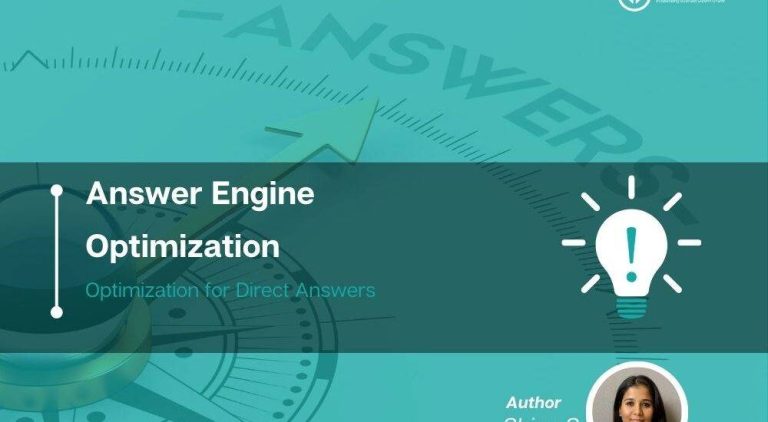
In the ever-evolving world of search engine optimization (SEO), one of the most significant shifts has been the integration of artificial intelligence (AI) into search results. Google’s recent introduction of AI-powered summaries, known as “AI overviews,” has changed how users interact with search results. These summaries appear at the top of search pages, offering concise answers to complex queries. But what exactly are these AI excerpts, and how do they affect content creators, publishers, and SEO professionals? This article explores the concept of AI Feature Snippet Simulation — a process that tests how AI-generated content appears in search results — and its implications for modern SEO strategies.
What Is AI Feature Snippet Simulation and Why It Matters
AI Feature Snippet Simulation is a testing process that mimics how AI systems like Google’s search engine generate and display snippets in search results. These snippets, often called “position zero” or featured snippets, are brief, highlighted excerpts from web pages that directly answer a user’s query. With the rise of AI-driven search technologies, such as Google’s AI overviews, understanding how these snippets are generated and displayed is crucial for content creators and SEO professionals.
The simulation process involves analyzing how an AI system might extract and present information from a webpage. It helps content creators understand how their content could be interpreted and presented by search engines, allowing them to optimize their content for better visibility. This is especially important in an era where AI-generated summaries are becoming more prevalent, potentially reducing the need for users to click through to websites.
As AI continues to evolve, so does the way it interacts with content. For example, Google’s AI overviews have already begun to shift user behavior, with some users preferring quick answers over clicking through to full articles. This trend highlights the growing importance of optimizing content for AI feature snippets, ensuring that your content is not only informative but also structured in a way that makes it easy for AI systems to recognize and highlight.
How AI Feature Snippet Simulation Impacts SEO Performance
The integration of AI into search results has profound implications for SEO performance. Traditional SEO practices, such as keyword targeting and on-page optimization, remain relevant, but now they must also account for how AI systems interpret and present content.
For instance, if your content is optimized for a specific keyword, it may still fail to appear in a featured snippet if the AI system determines that another piece of content provides a more accurate or concise answer. This means that content creators must not only focus on keywords but also ensure that their content is structured in a way that aligns with AI’s ability to extract and summarize information.
Moreover, AI feature snippet simulation can help identify potential issues with your content. By simulating how an AI might generate a snippet from your page, you can uncover gaps in your content, such as missing key details or unclear explanations. This allows you to refine your content to better meet the expectations of both users and AI systems.
Another critical factor is the impact on traffic and engagement. If your content is not appearing in AI-generated snippets, you risk losing valuable visibility. Studies show that featured snippets receive nearly 44% of all clicks in a SERP, making them a powerful tool for driving organic traffic. By leveraging AI feature snippet simulation, you can ensure that your content is positioned to capture this traffic, increasing your chances of ranking higher in search results.
Step-by-Step Implementation Framework
To effectively implement AI feature snippet simulation, follow this structured approach:
-
Define or Audit the Current Situation
Begin by assessing your current content and identifying which topics or keywords are most likely to trigger AI-generated snippets. Use tools like Ahrefs, SEMrush, or Google’s own Search Console to analyze your existing content and see which pieces are already appearing in featured snippets. -
Apply Tools, Methods, or Tactics
Utilize AI-powered tools such as Chatsonic, SurferSEO, or Answer The Public to simulate how your content might be interpreted by AI systems. These tools can help you identify potential improvements, such as rephrasing content to make it more concise or structuring it in a way that aligns with common snippet formats (e.g., lists, tables, or paragraphs). -
Measure, Analyze, and Optimize
After implementing changes, monitor the performance of your content using analytics tools. Track metrics such as click-through rate (CTR), dwell time, and bounce rate to determine whether your optimizations are effective. Continuously refine your content based on these insights to improve its chances of being featured in AI-generated snippets.
By following this framework, you can ensure that your content is not only optimized for traditional SEO practices but also aligned with the evolving landscape of AI-driven search results.
Real or Hypothetical Case Study
Consider a hypothetical scenario where a tech blog aims to increase its visibility in AI-generated search results. The blog’s team uses AI feature snippet simulation to test how their content would be interpreted by Google’s AI overviews.
After running the simulation, they discover that their content on “AI in healthcare” is not appearing in snippets due to overly technical language and lack of clear, concise answers. They then restructure the content, simplifying the language and organizing the information into bullet points and short paragraphs. Following these changes, the content begins to appear in featured snippets, resulting in a 30% increase in organic traffic and a 20% improvement in user engagement.
This case study demonstrates the tangible benefits of AI feature snippet simulation, showing how it can lead to measurable improvements in SEO performance.
Tools and Techniques for AI Feature Snippet Simulation
Several tools can help you simulate how AI systems might generate snippets from your content. Here are four of the most effective:
-
Chatsonic
An AI agent designed for featured snippet optimization, Chatsonic can analyze your content and suggest improvements to make it more snippet-friendly. It also helps with natural language processing to ensure that your content sounds human while still meeting AI requirements. -
SurferSEO
This tool offers semantic scoring and keyword clustering features that help you optimize your content for both traditional SEO and AI-generated snippets. It provides real-time suggestions for improving your content structure and relevance. -
Answer The Public
A popular tool for discovering question-based keywords, Answer The Public helps you identify the types of queries that are most likely to trigger AI-generated snippets. This insight allows you to tailor your content to match user intent more effectively. -
Google’s Search Console
While not an AI simulation tool per se, Google’s Search Console provides valuable data on how your content is performing in search results. It can help you identify which pages are already appearing in snippets and which ones need improvement.
These tools, when used together, provide a comprehensive approach to AI feature snippet simulation, helping you create content that is both user-friendly and optimized for AI-driven search results.
Future Trends and AI Implications
As AI continues to advance, the role of AI feature snippet simulation will become even more critical. With the rise of multimodal search and voice-activated assistants, users are increasingly relying on AI to provide instant answers. This shift means that content creators must adapt their strategies to ensure that their content is easily digestible by AI systems.
Additionally, the integration of AI into search results raises questions about copyright and content ownership. As seen in the lawsuit between The New York Times and OpenAI, there are growing concerns about how AI systems use content without proper attribution. In response, content creators must ensure that their work is not only optimized for AI but also protected against misuse.
Looking ahead, the future of SEO will likely involve a greater emphasis on AI readiness. Content that is structured for AI interpretation, includes clear and concise answers, and aligns with user intent will be more likely to succeed in an AI-dominated search landscape.
Key Takeaways
- Understand AI Feature Snippet Simulation: Learn how AI systems generate and display snippets, and how this affects content visibility.
- Optimize for AI-Driven Search: Refine your content to align with how AI systems interpret and present information.
- Use AI-Powered Tools: Leverage tools like Chatsonic, SurferSEO, and Answer The Public to improve your content’s chances of appearing in snippets.
- Monitor and Adapt: Continuously track your content’s performance and make adjustments based on user behavior and AI trends.
- Prepare for the Future: Stay ahead of the curve by adapting your SEO strategy to the evolving landscape of AI-driven search.
As AI becomes an integral part of the search experience, the ability to simulate and optimize for AI-generated snippets will be a key differentiator for content creators and SEO professionals. By embracing these changes, you can ensure that your content remains visible, relevant, and valuable in the age of AI.
Meta Title: Understanding AI Feature Snippet Simulation: How AI Excerpts Appear in Search Results
Meta Description: Discover how AI feature snippet simulation works and why it matters for SEO in 2025. Learn actionable steps to optimize your content for AI-driven search results.
SEO Tags (5): AI Feature Snippet Simulation, SEO Optimization, Featured Snippets, AI Overviews, Search Engine Visibility
Internal Link Suggestions: Parameter #155: SGE Answer Optimization, Parameter #165: AI Feature Snippet Simulation, Parameter #168: Trust Layer Integration
External Source Suggestions: https://www.google.com, https://searchengineland.com, https://backlinko.com








